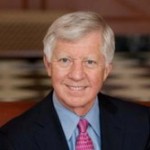Jul05
Getting Open Innovation Participation
Point: Crowdsourcing and open innovation efforts rely on participation. Attracting participants and encouraging activity is a key success factor in obtaining and vetting new product, service and process innovation ideas.
Story: Crowdsourcing is only as good as the crowd. Presenters at the World Research Group‘s Innovation Cubed Summit described several methods that they use to engage people for internal innovation efforts. In particular, they talked about getting participation beyond just idea submission.
Although some innovation contests have an easy-to-score objective measure of success (such as NetFlix’s rating algorithm contest or the get-to-space Ansari X PRIZE), most participatory innovation efforts cast a wider net and have more open-ended, subjective measures of performance. That means people need to evaluate all the submissions to find the best ones. These broad innovation contests involve more than just submitting a great idea (the proverbial 1% inspiration). The effort also requires the 99% perspiration to sort through hundreds or thousands of candidate ideas, score those ideas, and refine the ideas. Motorola, for example, received 17,000 ideas in their system. How can companies evaluate ideas?
The solution is to recruit and reward a crowd that helps curate, moderate, vote, and refine ideas even if those participants aren’t idea submitters. Kraft and PepsiCo, for example, emphasized ease-of-use in their efforts at increasing participation. They make it very simple and intuitive to join the innovation effort, submit ideas, vote, comment, and participate in the effort. The companies avoid the temptation of asking too many questions and putting approvals barriers on participation.
Real-time recognition also spurs interest and activity. Both PepsiCo and Motorola post a leaderboard of “Who’s Hot” on their innovation portals. The up-to-date ranking list enables competitive participants to see their standing at any time. Timely updates to standings keep people more engaged than if the company ran a “submit-by-the-deadline-and-you won’t-hear-anything-for-a-month” black hole contest. Game mechanics with well-defined ways of earning points or game currency help increase activity.
Finally, offer a sliding scale of rewards for valuable participation, not just idea submission. Although some contests focus on rewarding a single big winner with the best idea, several of the companies at the summit sought ways to reward more of the participants in the system. For example, PepsiCo offers participatory awards for reaching certain point totals. Both Motorola and PepsiCo had side-contests for high levels of participation, such as “Top Voter” or “Top Point-Getter” in addition to awards for the best ideas. Approximately 10% of PepsiCo’s 3000 participants reached some sort of award level for their participation in the open innovation efforts.
Action
- Minimize the labor, barriers, or hassles for participation in innovation efforts
- Create a transparent process with clearly-defined expectations and rewards for participation as well as idea submission
- Provide a sliding scale of rewards for all kinds of participation on the innovation process, not just one big prize for one big idea.
For further information: The next World Research Group Open Innovation Summit will be held August 10-12, 2011 in Chicago, IL.
Comments Off on Getting Open Innovation ParticipationCase study, Innovation, open innovation












